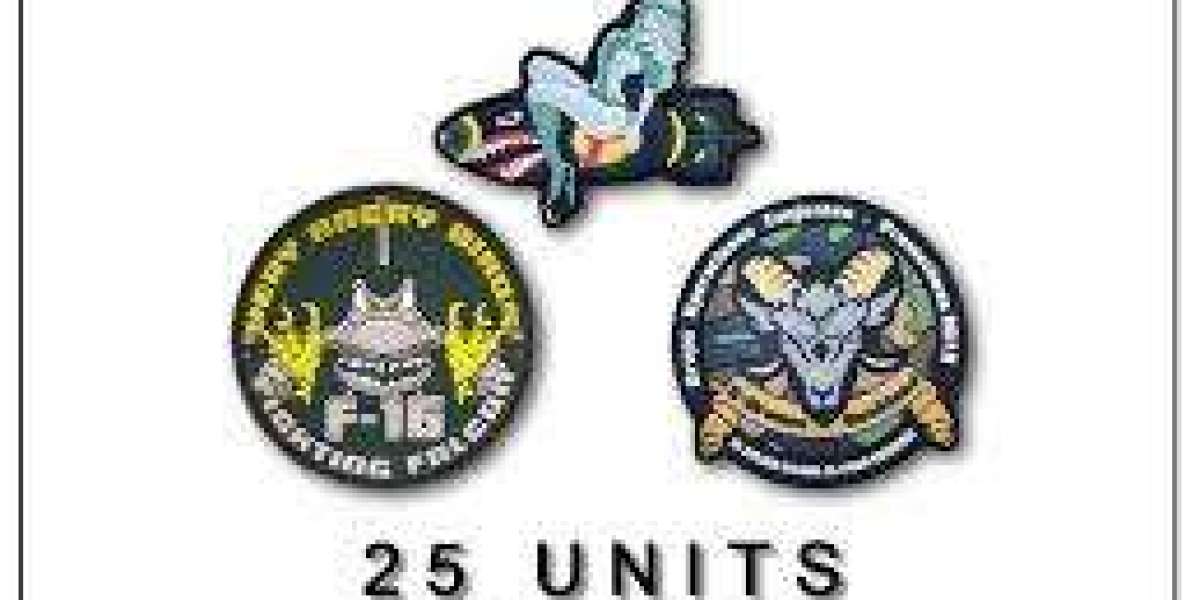Woven patches are a popular type of fabric patch known for their detailed and intricate designs. They are made using a loom, which weaves threads together to create the desired design directly into the fabric. Here are some key features and characteristics of woven patches:
Features of Woven Patches:
Detail and Precision: Woven patches are known for their ability to capture fine details and intricate designs. The weaving process allows for more precise and detailed patterns compared to embroidered patches.
Smooth Texture: The woven method results in a smooth, flat surface without the raised texture that is characteristic of embroidery. This makes them ideal for designs with small text or intricate patterns.
Durability: Woven patches are durable and can withstand regular wear and washing. The woven threads are tightly bound, ensuring the patch remains intact and the design does not fray over time.
Color Variety: They can incorporate a wide range of colors. The threads used in the weaving process can be dyed in various shades, allowing for vibrant and accurate color representation.
Thin and Lightweight: Woven patches are typically thinner and lighter than embroidered patches, making them less bulky and more flexible. This makes them suitable for application on a variety of garments and accessories without adding significant weight or stiffness.
Common Uses:
Apparel: Woven patches are commonly used on clothing items such as jackets, hats, shirts, and jeans. They add a stylish and personalized touch to these garments.
Uniforms: Many organizations, including military, police, and scout groups, use woven patches on their uniforms to signify rank, achievements, or affiliations.
Branding: Companies and brands use woven patches as a promotional tool, attaching them to products like bags, caps, and outerwear to increase brand visibility.
Souvenirs and Collectibles: Woven patches are popular as souvenirs or collectibles. They are often found at tourist destinations, events, and conventions.
Application Methods:
Sew-On: The most traditional method, where the patch is sewn onto the fabric using a needle and thread.
Iron-On: Many woven patches come with an iron-on backing, making it easy to attach them using a household iron.
Velcro: Some patches are designed with a Velcro backing, allowing for easy attachment and removal, which is particularly useful for military and tactical applications.
Adhesive: Certain woven patches come with a peel-and-stick adhesive backing for temporary use.
Woven patches are a versatile and attractive option for adding custom designs to various items. Their durability, detail, and ease of application make them a preferred choice for many uses.
Woven patches are a popular type of fabric patch known for their detailed and intricate designs. They are made using a loom, which weaves threads together to create the desired design directly into the fabric. Here are some key features and characteristics of woven patches:
Features of Woven Patches:
Detail and Precision: Woven patches are known for their ability to capture fine details and intricate designs. The weaving process allows for more precise and detailed patterns compared to embroidered patches.
Smooth Texture: The woven method results in a smooth, flat surface without the raised texture that is characteristic of embroidery. This makes them ideal for designs with small text or intricate patterns.
Durability: Woven patches are durable and can withstand regular wear and washing. The woven threads are tightly bound, ensuring the patch remains intact and the design does not fray over time.
Color Variety: They can incorporate a wide range of colors. The threads used in the weaving process can be dyed in various shades, allowing for vibrant and accurate color representation.
Thin and Lightweight: Woven patches are typically thinner and lighter than embroidered patches, making them less bulky and more flexible. This makes them suitable for application on a variety of garments and accessories without adding significant weight or stiffness.
Common Uses:
Apparel: Woven patches are commonly used on clothing items such as jackets, hats, shirts, and jeans. They add a stylish and personalized touch to these garments.
Uniforms: Many organizations, including military, police, and scout groups, use woven patches on their uniforms to signify rank, achievements, or affiliations.
Branding: Companies and brands use woven patches as a promotional tool, attaching them to products like bags, caps, and outerwear to increase brand visibility.
Souvenirs and Collectibles: Woven patches are popular as souvenirs or collectibles. They are often found at tourist destinations, events, and conventions.
Application Methods:
Sew-On: The most traditional method, where the patch is sewn onto the fabric using a needle and thread.
Iron-On: Many woven patches come with an iron-on backing, making it easy to attach them using a household iron.
Velcro: Some patches are designed with a Velcro backing, allowing for easy attachment and removal, which is particularly useful for military and tactical applications.
Adhesive: Certain woven patches come with a peel-and-stick adhesive backing for temporary use.
Woven patches are a versatile and attractive option for adding custom designs to various items. Their durability, detail, and ease of application make them a preferred choice for many uses.






